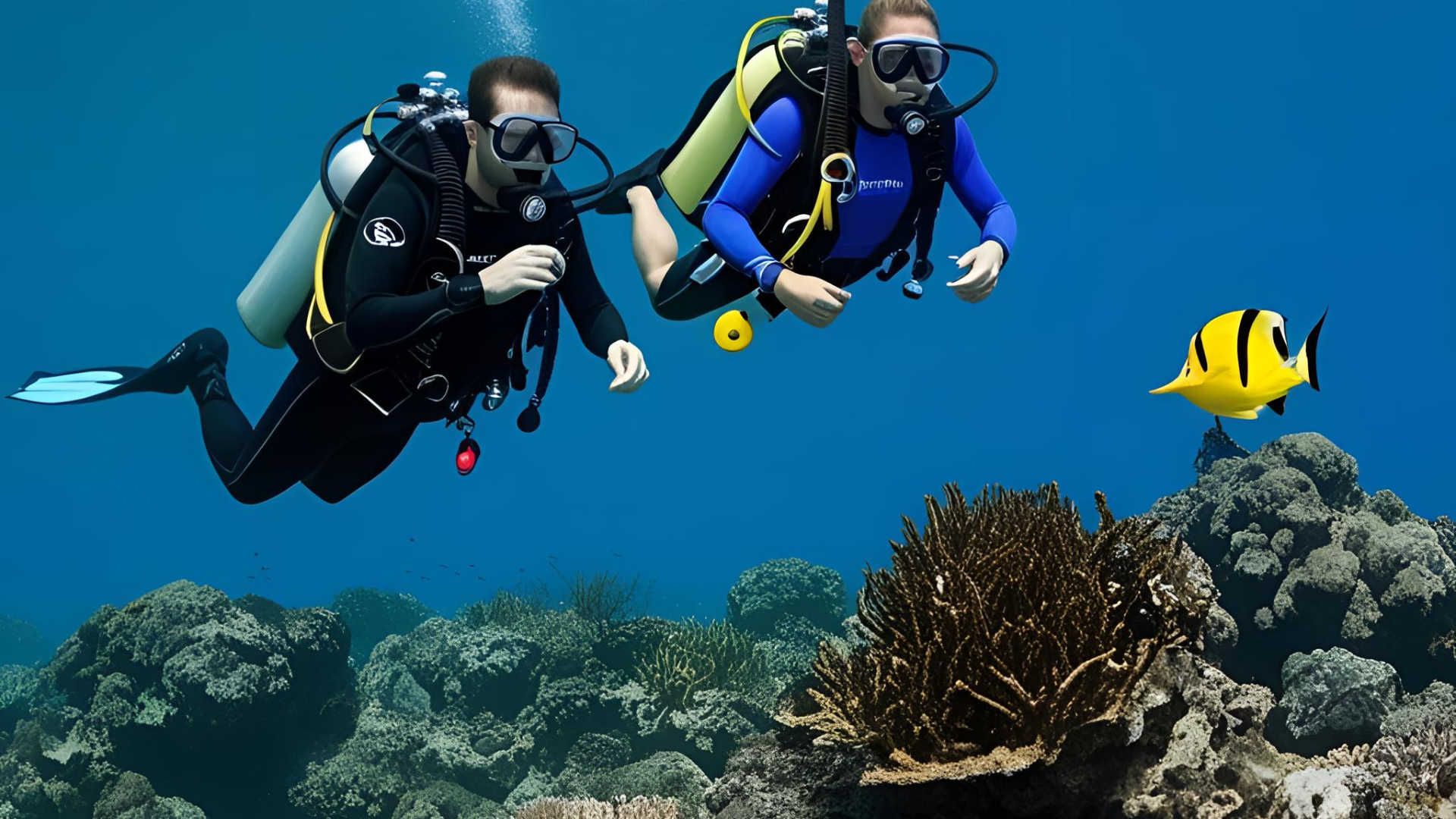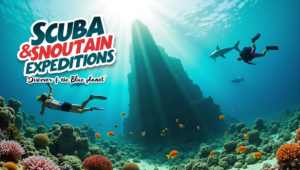Introduction
The ocean covers more than 70% of the Earth’s surface, yet much of it remains unexplored. Scuba diving and snorkeling provide unique opportunities to witness the breathtaking beauty of the underwater world. These activities allow enthusiasts to immerse themselves in an aquatic environment teeming with vibrant marine life, stunning coral reefs, and mysterious shipwrecks. Whether one is a seasoned diver or a beginner looking to dip their toes into the water, scuba diving and snorkeling offer exhilarating and enriching experiences that connect people with nature.
The Difference Between Scuba Diving and Snorkeling
What is Snorkeling?
Snorkeling is a surface water activity that requires minimal equipment: a mask, snorkel, and fins. It is accessible to almost everyone, making it an excellent choice for families and beginners. Snorkelers float on the water’s surface while observing the underwater world below. This activity is popular in shallow, clear waters where coral reefs and marine life are easily visible
What is Scuba Diving?
Scuba diving, on the other hand, involves using self-contained underwater breathing apparatus (SCUBA) to explore greater depths. Divers carry oxygen tanks and use a regulator to breathe underwater. Unlike snorkeling, scuba diving requires training and certification, as it involves navigating different depths, managing buoyancy, and understanding decompression limits.
Benefits of Scuba Diving and Snorkeling
1. Enhancing Physical and Mental Health
Both activities provide a full-body workout, improving c
ardiovascular health, musc
le strength, and endurance. Swimming against currents while exploring marine ecosystems enhances lung capacity and flexibility. Additionally, being underwater promotes mental relaxation, reducing stress and anxiety through the calming effects of rhythmic breathing and serene underwater environments.
2. Connecting with Marine Life
Snorkeling and diving allow individuals to interact with diverse marine species, from colorful coral formations to magnificent creatures like sea turtles, manta rays, and even sharks. Witnessing these animals in their natural habitat fosters a deep appreciation for ocean conservation and marine biodiversity.
3. Adventure and Exploration
Exploring underwater landscapes, swimming through caves, diving near shipwrecks, or discovering hidden reefs, adds an element of adventure to these activities. Scuba diving takes adventurers beyond the surface, where they can uncover the secrets of the deep blue sea.
Essential Gear for Scuba Diving and Snorkeling
Snorkeling Gear

- Snorkel – A tube allowing for effortless breathing while floating on the surface.
- Mask – Provides clear underwater vision and a watertight seal around the eyes.
- Fins – Enhance mobility and efficiency in the water.
- Wetsuit (Optional) – Provides warmth in cooler waters.
Scuba Diving Gear
- Scuba Tank – Supplies compressed air for breathing underwater.
- Regulator – Controls the flow of air from the tank to the diver.
- Buoyancy Control Device (BCD) – Helps divers maintain neutral buoyancy.
- Dive Computer – Monitors depth, time, and decompression status.
- Weights and Wetsuit – Essential for maintaining buoyancy and body temperature.
Top Destinations for Scuba Diving and Snorkeling
1. The Great Barrier Reef, Australia
One of the most famous and largest coral reef systems in the world, offering an abundance of marine life, vibrant corals, and clear waters for both snorkelers and divers.
2. The Maldives
Home to crystal-clear waters, exotic fish, manta rays, and whale sharks, the Maldives is a paradise for underwater exploration.
3. Raja Ampat, Indonesia
A biodiversity hotspot with some of the richest marine ecosystems on the planet, featuring untouched coral reefs and rare marine species.
4. The Red Sea, Egypt
Known for its warm waters, vibrant reefs, and historical shipwrecks, making it a haven for diving enthusiasts.
5. The Caribbean (Bonaire, Cozumel, Bahamas)
Offering calm waters, diverse marine life, and spectacular coral formations, the Caribbean is perfect for divers and snorkelers alike.
Safety Tips for an Enjoyable Experience
1. Check Equipment Before Diving
Ensure all gear is in good condition, with no leaks or malfunctions. Properly fitting equipment enhances comfort and safety.
2. Be Aware of Your Surroundings
Stay aware of marine life, currents, and weather conditions. Avoid touching corals or disturbing marine animals.
3. Never Dive Alone
Always dive or snorkel with a buddy for safety and support in case of emergencies.
4. Follow Decompression Guidelines
For scuba divers, adhering to decompression limits and safety stops prevents decompression sickness.
5. Respect Marine Life
Observe wildlife from a distance, and never feed or harass sea creatures.
How to Get Started with Scuba Diving and Snorkeling
Snorkeling for Beginners
- Start in shallow, calm waters to get comfortable.
- Practice breathing through the snorkel before heading into deeper water.
- Use fins to enhance mobility and conserve energy.
Becoming a Certified Scuba Diver
- Enroll in a certification course from organizations like PADI or SSI.
- Complete theoretical lessons and confined water training.
- Perform open-water dives under instructor supervision.
- Obtain certification to dive independently.
Conclusion
Scuba diving and snorkeling open doors to an incredible underwater world filled with beauty, adventure, and discovery. Whether floating on the surface admiring coral reefs or diving into the deep blue to explore shipwrecks, these activities offer unforgettable experiences. By following safety guidelines, using proper equipment, and respecting marine ecosystems, anyone can embark on an exciting underwater journey.
